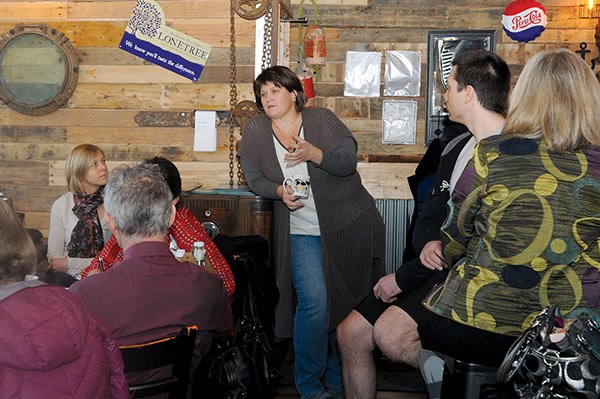The district’s $3 million digital strategy is all about increasing efficiency and connection, according to two of the people in charge of rolling it out.
The overall strategy has two separate but associated parts: the changes at municipal hall, which will streamline work for district employees and provide faster and more enhanced services for the public; and a strategy for the community still being worked on by the newly formed digital strategy committee that aims to make Squamish more connected via the Internet.
“In the spirit of Christmas, it’s a Christmas tree with the ornaments hanging off of it,” Councillor Peter Kent said to explain how the strategies work together. “If the tree’s not there, the [ornaments] aren’t supported, and if the ornaments aren’t there, it’s merely the tree.”
The digital strategy starts at the district with a four-year plan to replace some aging systems at city hall, according to Conrad Kordel, district IT manager.
At the core is an overhaul to the district’s finance system, he noted.
“It is an aging system. It wasn’t implemented well in the first place,” said Kordel.
“We are not getting the kind of reports we need for managers, we are not getting the kind of data we need for council.”
What district staff want is a platform with a financial database at its core that can be built on going forward, Kordel said, adding the systems needed in other areas of the district, such as recreation, would need to be well connected to the new finance system.
Currently much at the district is manual. For example, staff still use paper timecards.
Ultimately, the public will be better served and district staff will be able to keep up with demand, thanks to the digital system overhaul, Kordel said.
The implementation of the new finance system is expected to take about two years.
Council is considering $800,000 in the 2016 budget, which will cover the cost of about half of the financial system upgrades and staffing hours needed, the IT manager said. One of the finance managers will be in charge of implementing the project and her position will have to be backfilled, Kordel added.
Just over $1.3 million of the digital upgrade is proposed for the 2017 budget, and the remaining $800,000 is divided between the 2018 and 2019 budgets, according to the current draft budget.
A $150,000 radio tower is also planned for 2019.
Costs are highest for 2017 because in addition to implementing the remainder of the finance system, a development management solution will also be launched, Kordel said.
The projected costs are based on an analysis of other municipalities and multiple vendors. A request for proposals to supply the needed systems has yet to go out, Kordel said.
In terms of changes the public will see, there are some “quick wins” on their way using the existing system.
“We are going to have the ability to pay taxes online in 2016,” he said, adding an emergency notification system is also in the works.
Kent chairs the newly formed digital strategy committee, which is looking at broader Internet connectively for the community. He said the term digital strategy is nebulous and throws people off.
“Digital strategy just merely implies the tool set,” he said.
“We need those digital tools to allow us to really connect better.”
A more connected community would, among other things, attract more high tech jobs, allow more people to work from anywhere in the district and reach the more vulnerable such as those in seniors’ homes, he said.
“Say they want to be able to have Wi-Fi, how can we help facilitate that? To facilitate digital literacy – people who don’t really have the wherewithal or the knowledge to connect,” Kent explained.
The committees’ wants and wishes will be added to the foundational municipal plan for which Kordel is responsible. A request for proposals from vendors to supply the systems will be issued in January, Kent said.



